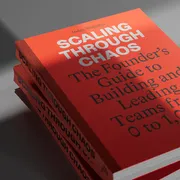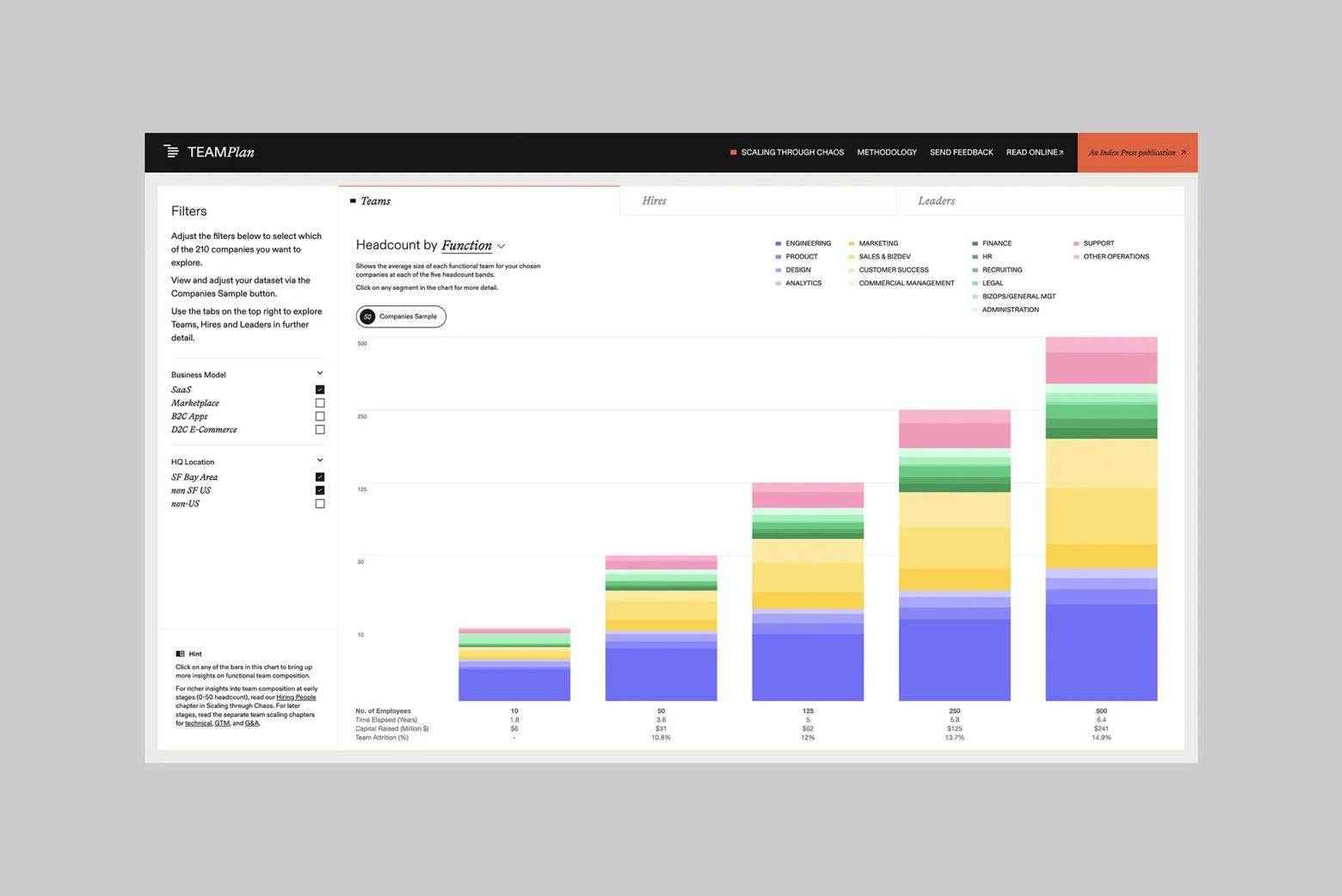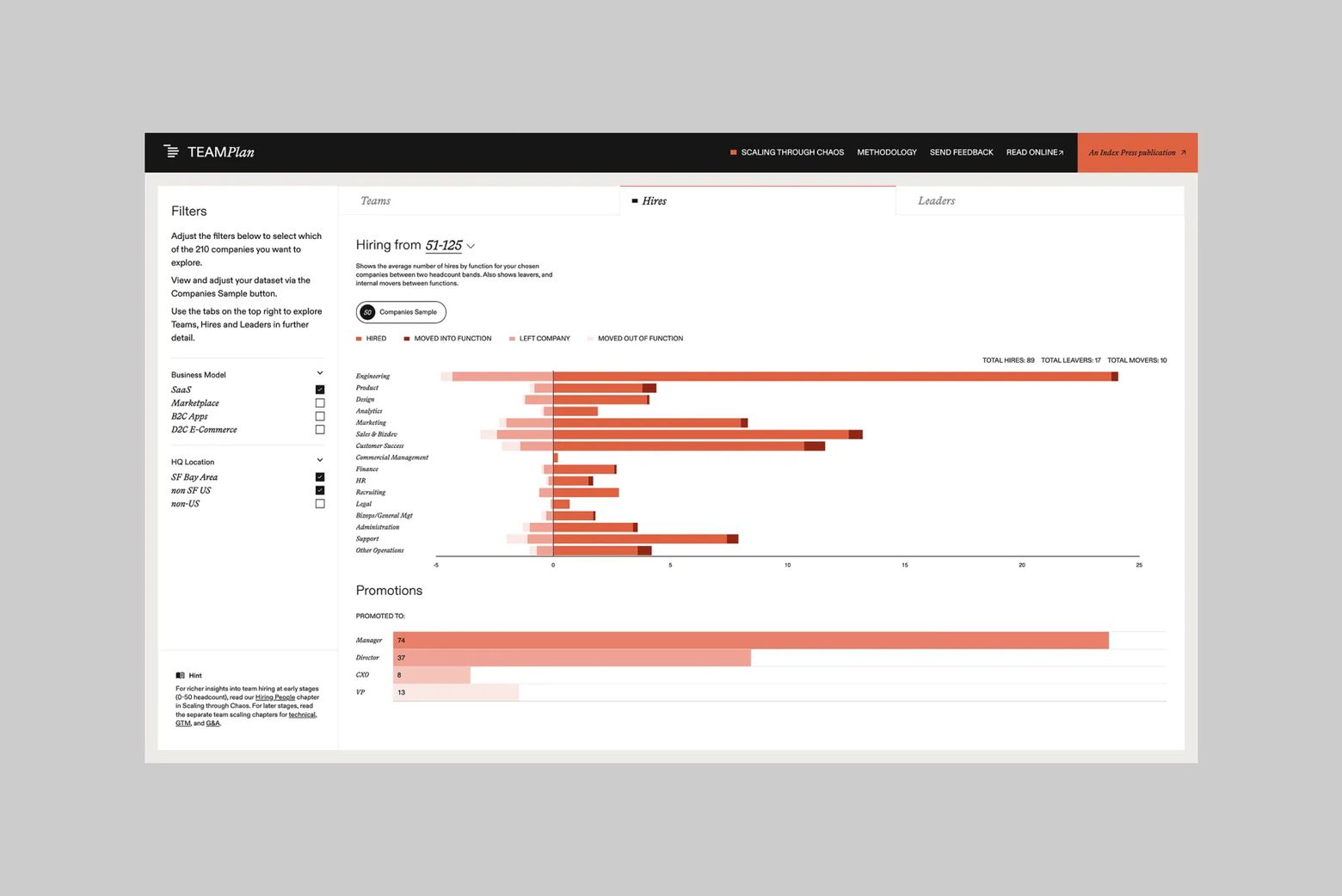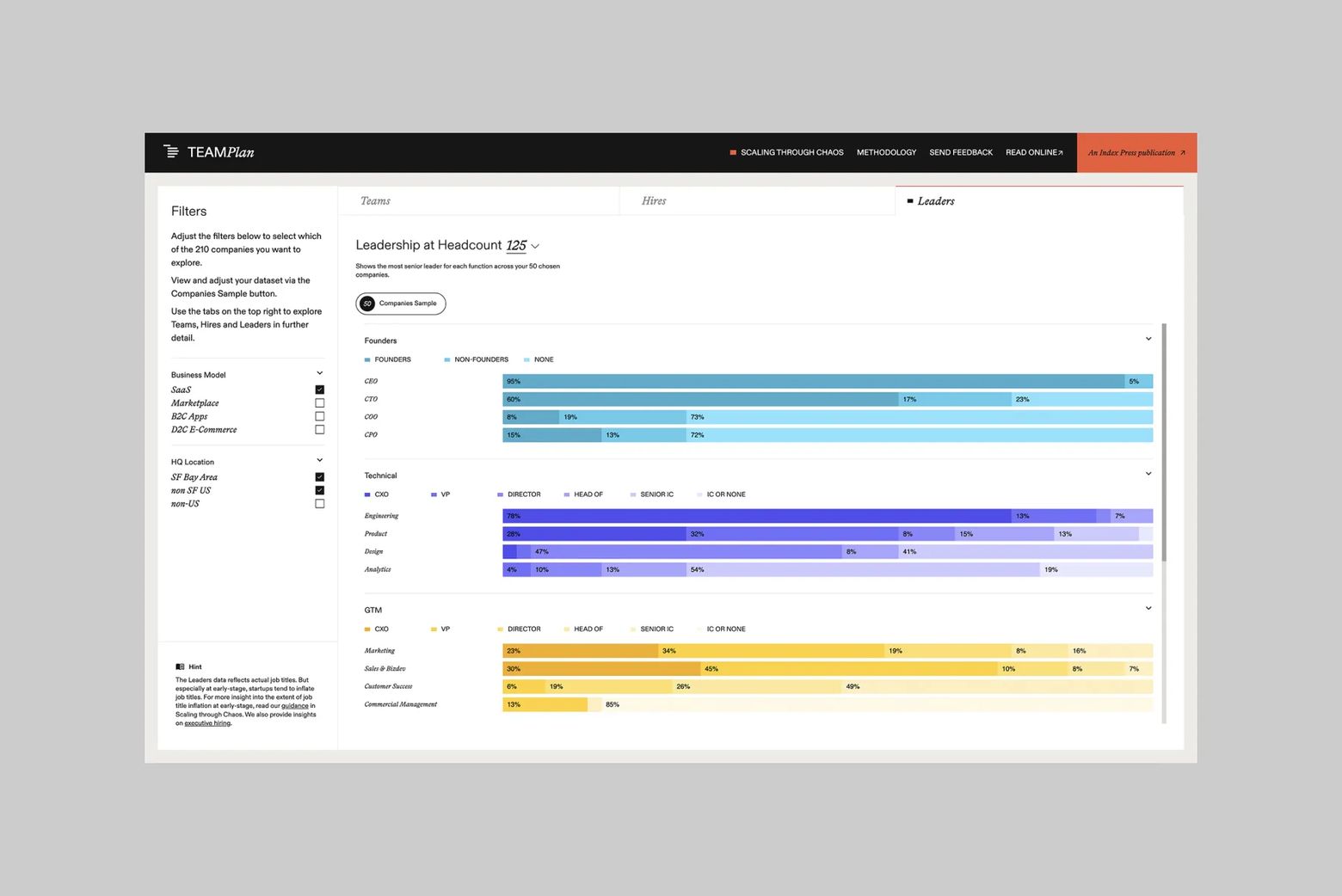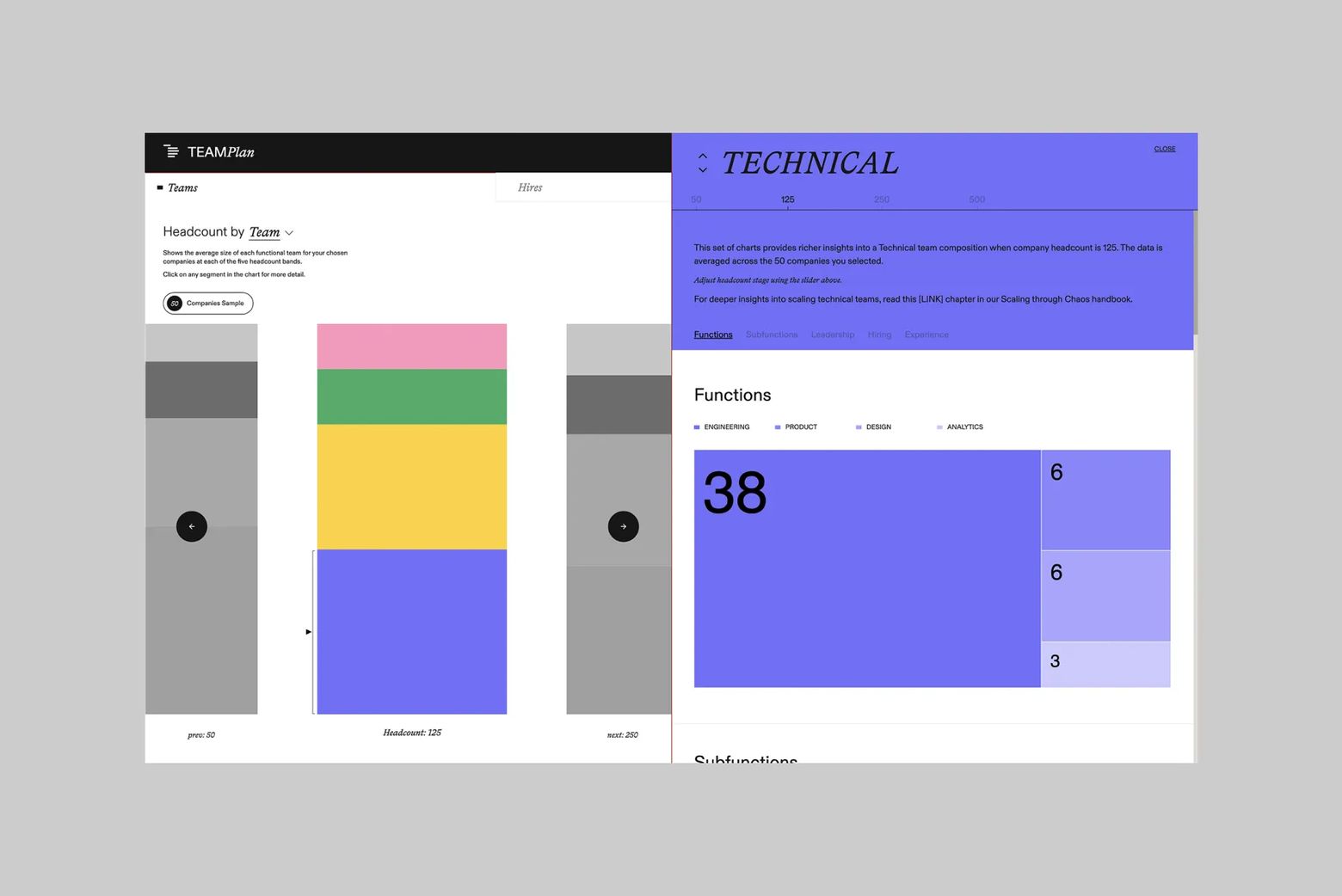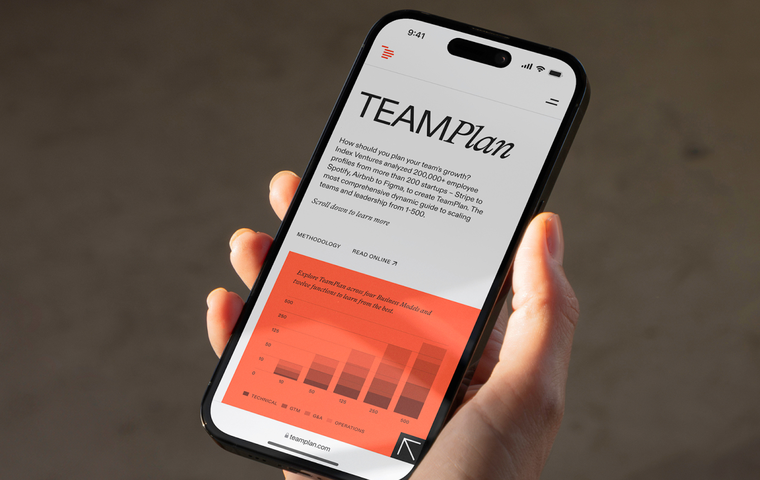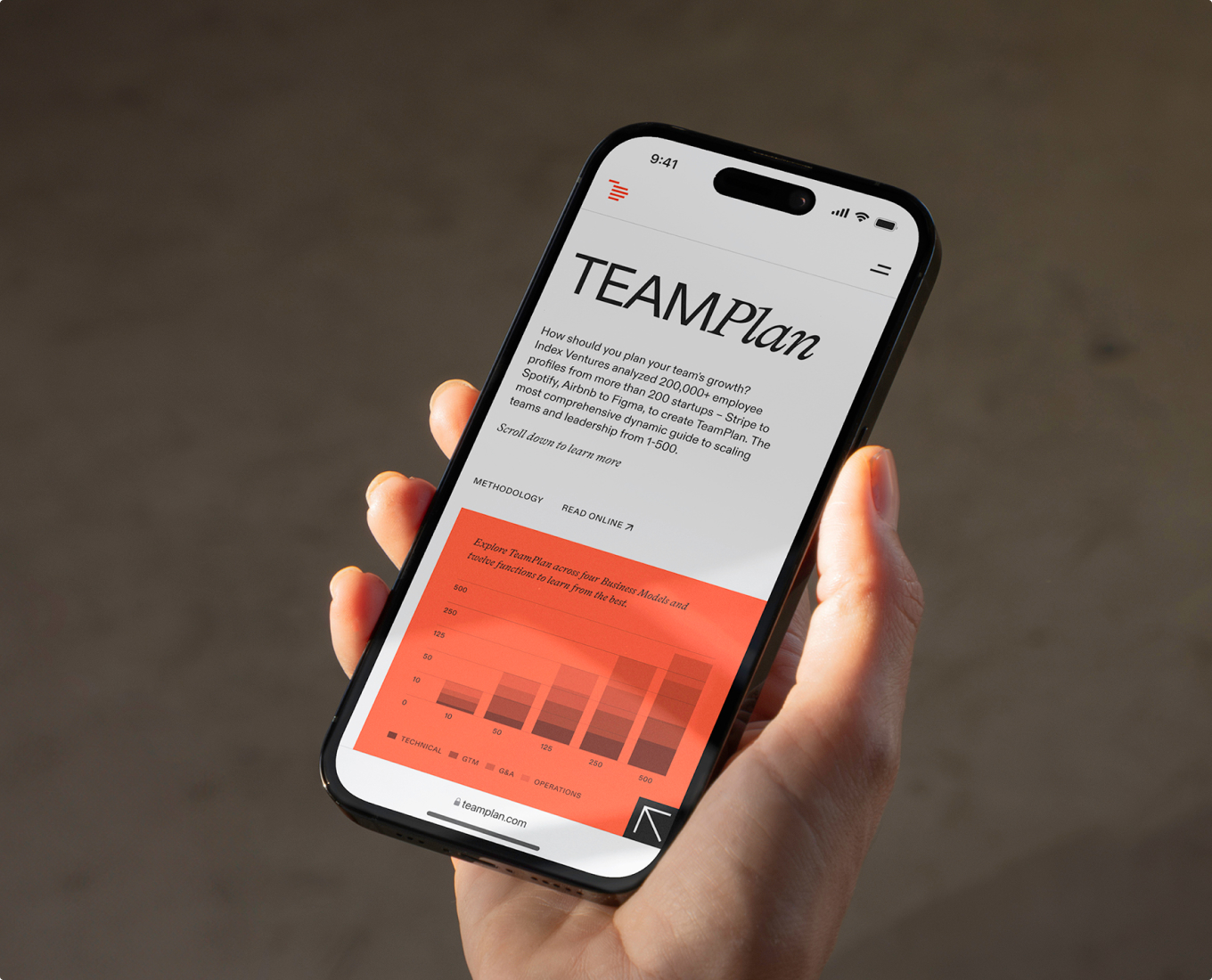
TEAM
Plan
TEAM
Plan
ORG DESIGN BENCHMARKING TOOL TO HIRE THE RIGHT PEOPLE, IN THE RIGHT ROLES, AT THE RIGHT TIME
ORG DESIGN BENCHMARKING TOOL TO HIRE THE RIGHT PEOPLE, IN THE RIGHT ROLES, AT THE RIGHT TIME
Methodology
We reviewed the people and talent-related questions we have received from our portfolio companies over the last ten years to determine the FAQs to answer in TeamPlan.
TeamPlan is based on data from 210 of the most successful tech companies – from Airbnb to Figma to Stripe – across four distinct business models.
We analyzed the hires they made, the backgrounds the candidates came from, and what the sequence was. This covered company growth from 0 - 500 headcount, and involved a data-set of over 200,000 founder and employee career profiles.
We categorized over 8,000 job titles into 16 functions, a further 33 sub-functions, and 5 managerial levels.
For founders, people leaders and finance leaders, TeamPlan helps you level up org design and make data-driven decisions about things like team growth and composition, leadership hiring, attrition, and more.
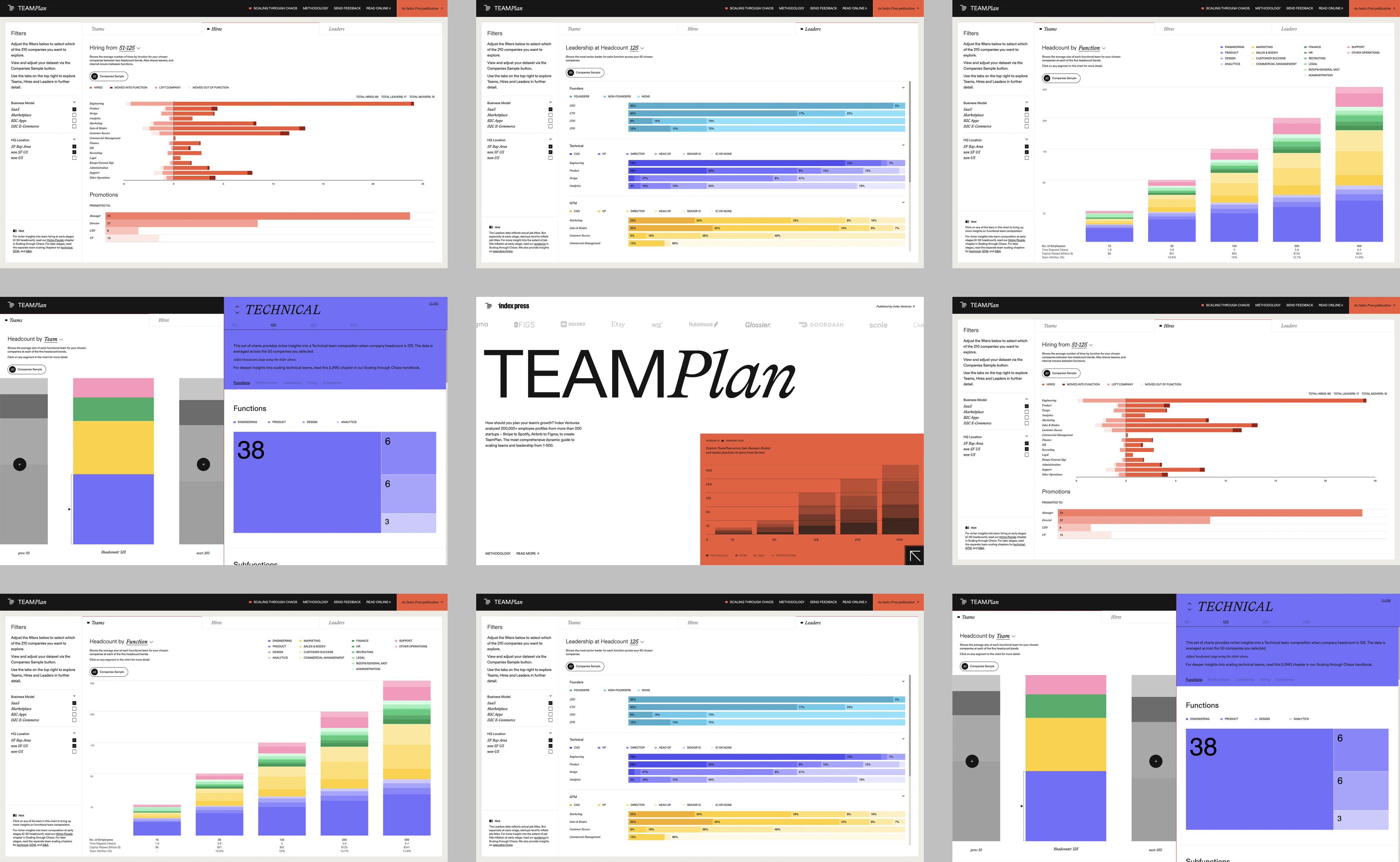
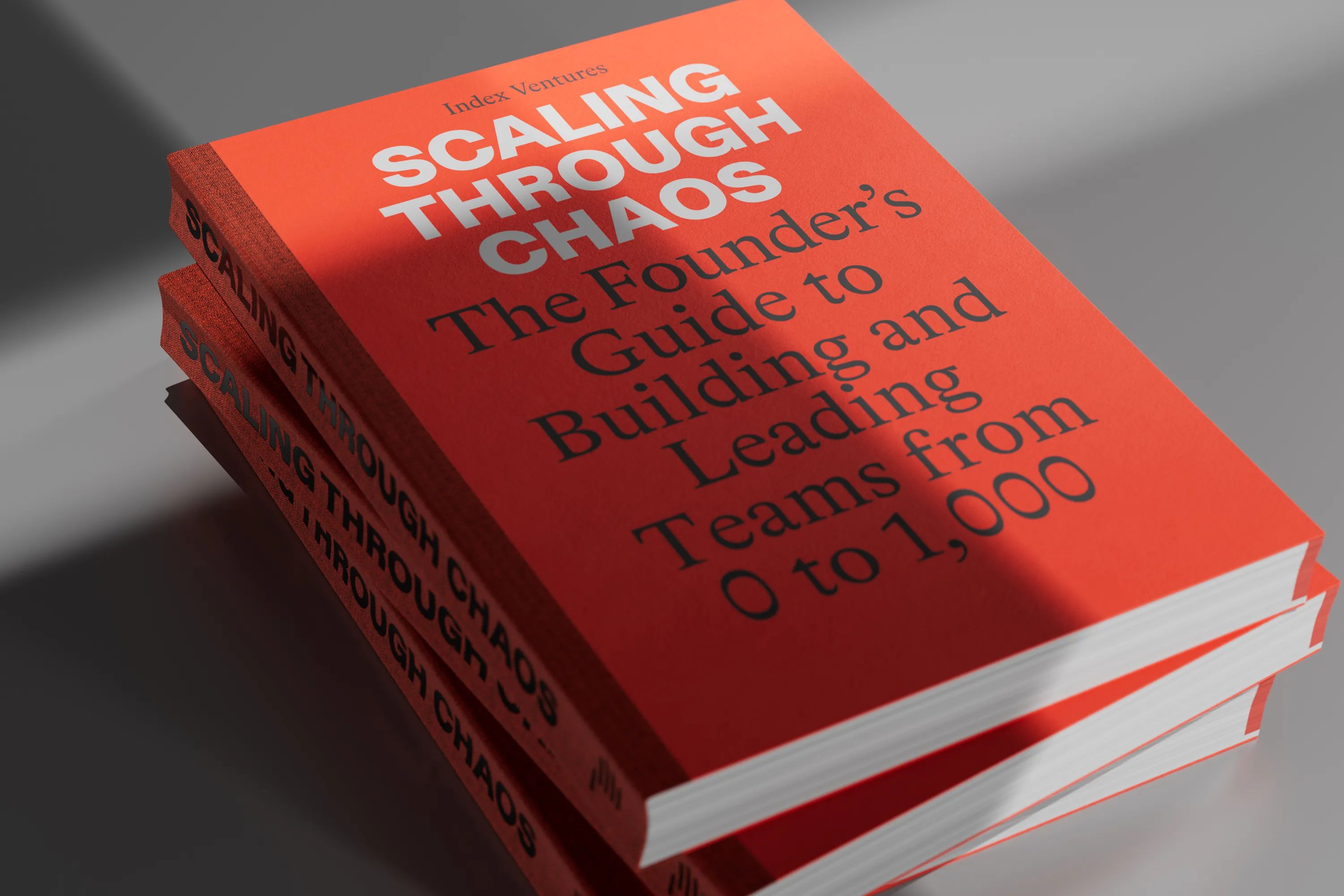
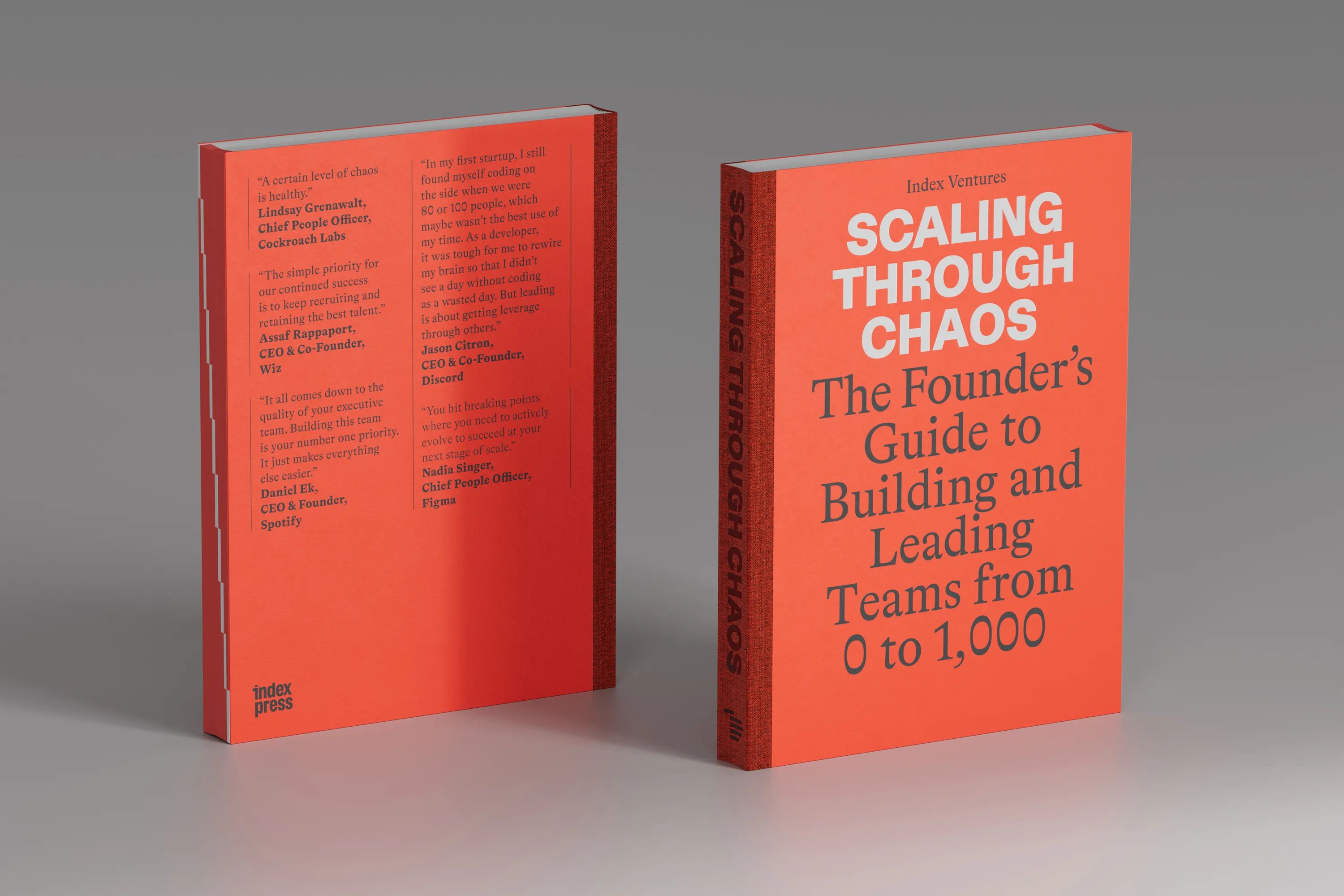
Scaling Through Chaos Book
SCALING
Through Chaos
You start a business because you’re obsessed with solving a problem. But as you scale, you’ll discover that 50% of your time is taken up with people – hiring, retaining, organizing and inspiring your team. Packed with deeply researched recommendations and first-hand accounts from the world’s best entrepreneurs, Scaling Through Chaos is the canonical guide to how to build, structure and run a high-performing team from 0 to 1000.
Highlights
Articles
TEAMPLAN: AN ORG DESIGN BENCHMARKING TOOL FOR RAPIDLY SCALING STARTUPS
You’ve just closed your Series A, meticulously planned your product roadmap, and presented revenue targets to your team. The next day, your head of engineering drops big news: instead of the anticipated 20% increase in their team's size, she needs to double her headcount to deliver on the product roadmap. She argues that in her experience, this is the norm for your ambitious plans. But it’s far from what you’ve seen. How do you determine the best course of action?
READ MORE